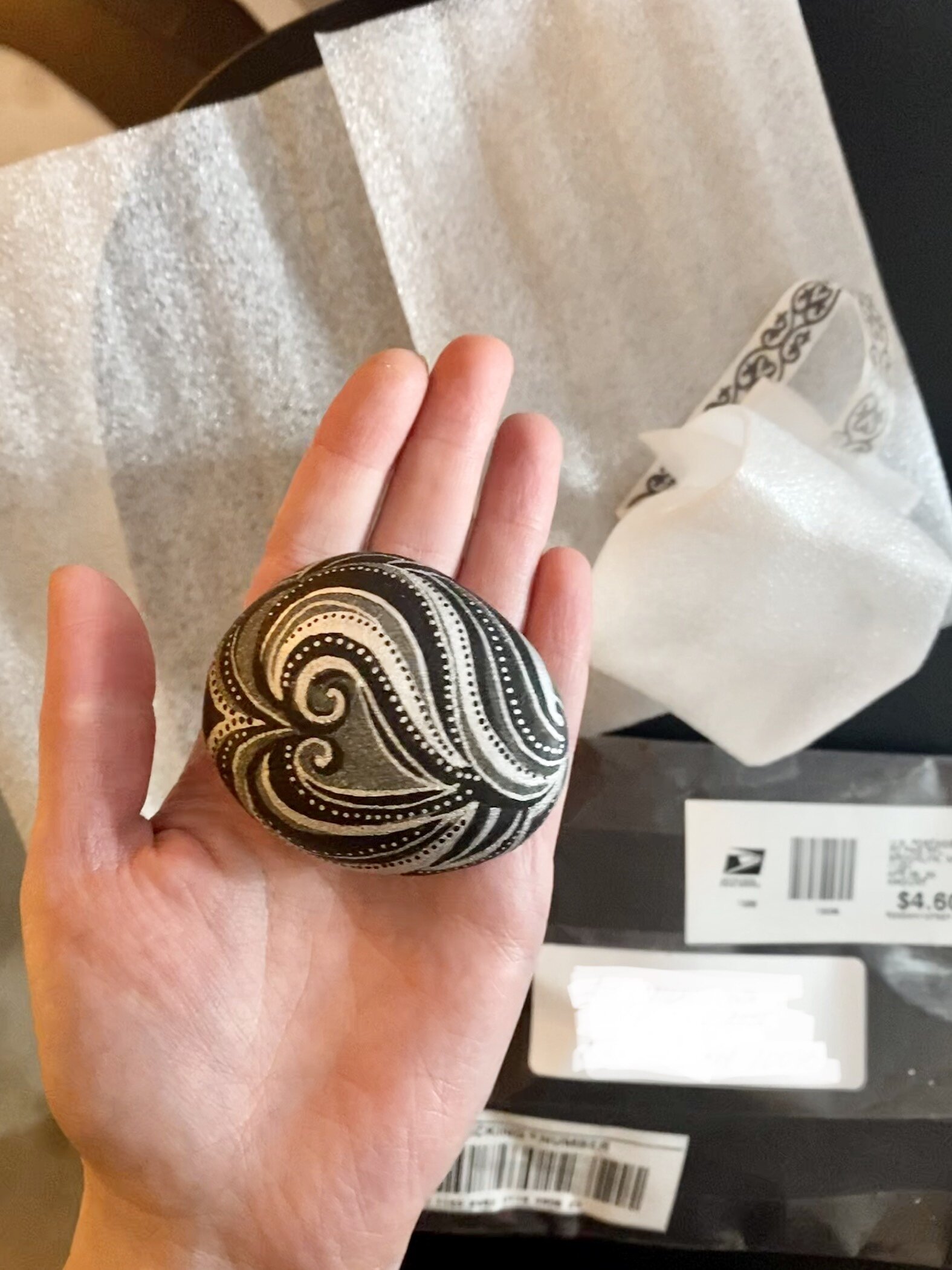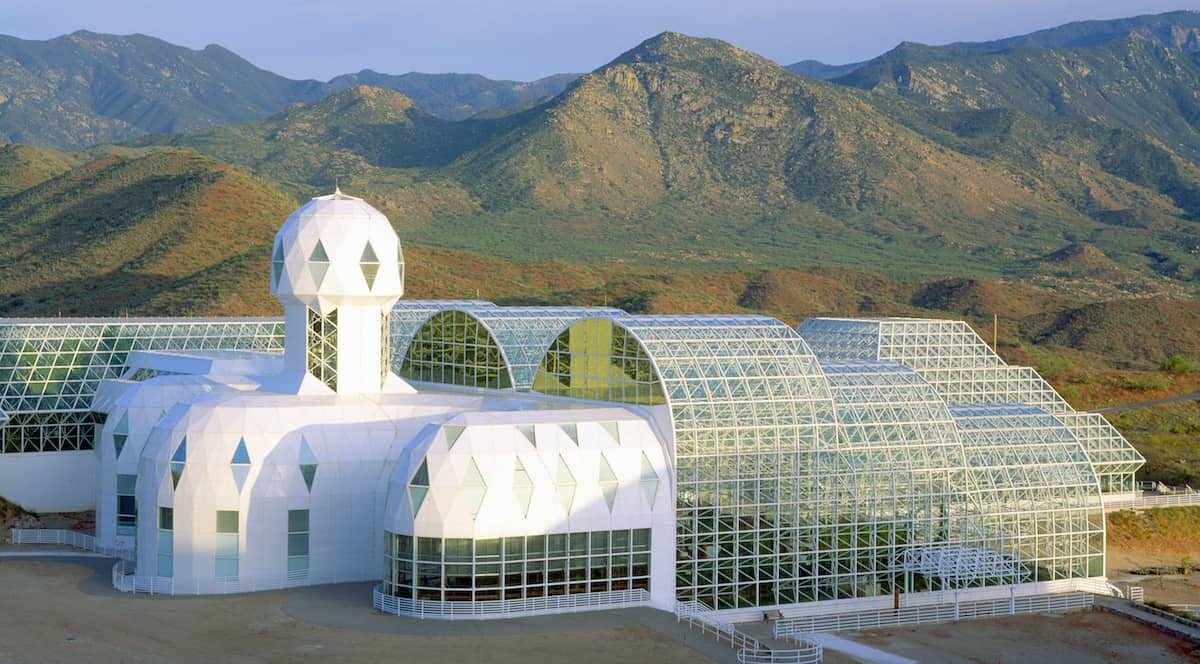On Monday night I have opened my mailbox to discover a black envelope. (I am intentionally using the verb to “discover”, since these days my incoming mail is highly predictable and the trip to the mailbox almost feels like an expedition). Inside was a painted rock from my friend Sherry Berger. She has painted it after dinner on my roof last summer. The rock is from Emerald Beach in Australia. According to her “it’s a magical place, the dramatic coast ranks in my top 5 for a good morning jog”.
It has been her project to paint rocks and leave them around the city. The project has numerous contributing artists. The group is called ‘no name Rocks’ and here is the website. Currently there only 200 of them floating somewhere around the world. If you find one, you are lucky and I hope it will light up your day. Or, if you want to share kindness or have a creative outburst, maybe you want to paint one.
It was an amazing reminder that the world is full of beautifully unforeseen things we make to just see each other smile.
We, humans, are surrounded by a myriad of objects that we, humans, make. Over the years we have been refining the techniques and evolving the aesthetics. We constantly debate the quantity of objects that is socially acceptable or required. But this does not change the fact that on average we daily use and encounter a lot of objects.
These days, as we are confined to locked spaces with limited opportunities to acquire new things, the objects acquire new meaning for us. I really like the project called Atlas of Everyday objects that functions as an observational lab about the perceived meaning of objects in the time of global social Isolation.
Here are the 9 items that shape my daily reality. Some have been in heavy usage for a while and have cemented their prominence and significance in my life (books occupy around 3%-5% of my living space are a visual inspiration and mental entertainment). Some were newly acquired; I have not owned a coffee maker before COVID-19, as NYC coffee shops have spoiled me with to-go cups- today I am a proud owner of a Bialetti. Some have acquired new appreciation; my laptop is THE main tool of my WORK, communication, and entertainment - it’s value can not currently be assessed; the painting I made 5 years ago, now works as the main background for my conference calls and the conversation starter. And some are completely new accessories (face mask and gloves) and time will tell how permanent they are going to be.
#objectsofmyisolation
I have been a huge fan of Jeff Atwood (software developer, author blogger), but only this week I finally got the time to cover his full body of written work. Here is a summary of some interesting pearls of wisdom from his blog Coding Horror and the book “Effective Programming”:
There is also no correlation between years of experience and skill in programming: because “what software developers do best is learn”;“
Vampires (Programmers) versus Werewolves (Sysadmins): both System Administrators and Programmers have different, and perhaps complementary, supernatural powers.
“The worst team member is the best predictor of how any team performs”
The parallel with users and usability is natural. Either maximize the cheese (make your application compelling), or minimize the shock (make your application easy to use). Note: ” You’ll Never Have Enough Cheese” unless you are providing users free mp3s, or access to pornography”
Fitts’ Law and Infinite Width: the larger an item is, and the closer it is to your cursor, the easier it is to click on. Time = a + b log2 ( D / S + 1 ) is a predictive model of human movement primarily used in human-computer interaction and ergonomics
“As we know, there are known knowns; there are things we know we know. We also know there are known unknowns; that is to say we know there are some things we do not know. But there are also unknown unknowns—the ones we don’t know we don’t know. “
In Arizona, there is the environmental sciences research facility that was home to controversial research in the 1990s - Biosphere 2. Eight people were to be locked inside for two years to test Biosphere 2’s capacity to support life. The new documentary “Spaceship Earth” was released on Friday (May 8th , 2020) traces the journey of people who envisioned and build it against remarkable odds. A fascinating film about “a small, idealistic group trying to reimagine the world”.
** hoping to travel here as soon as air-travel will resume to usual convenience.
My friend Andrew Ippoliti built this simple and beautiful app : calm.af . It’s simplicity is astounding.
A Sicilian fresco from 1445. In the previous century, the Black Death killed at least a third of Europe’s population. I am looking forward to see new fresco’s from 2020.
“Code is our enemy. Code is bad. It rots. It requires periodic maintenance. It has bugs that need to be found. New features mean old code has to be adapted.
The more code you have, the more places there are for bugs to hide. The longer checkouts or compiles take. The longer it takes a new employee to make sense of your system. If you have to refactor there’s more stuff to move around.
Furthermore, more code often means less flexibility and functionality. This is counter-intuitive, but a lot of times a simple, elegant solution is faster and more general than the plodding mess of code produced by a programmer of lesser talent. > Code is produced by engineers. To make more code requires more engineers. Engineers have n^2 communication costs, and all that code they add to the system, while expanding its capability, also increases a whole basket of costs.
You should do whatever possible to increase the productivity of individual programmers /in terms of the expressive power of the code they write/. Less code to do the same thing (and possibly better). Less programmers to hire. Less organizational communication costs.”
Rich Skrenta “Code is Our Enemy”





